Kibale National Park
Deep in Uganda’s emerald heart, the air trembles with the call of wild chimpanzees. Here, in the shadowed canopy of Kibale National Park, your adventure begins.
Kibale is not just another park on the map — it’s where raw wilderness meets soul-stirring encounters.
Known globally as the Primate Capital of the World, Kibale is one of the last places on Earth where you can walk beside wild chimpanzees in their natural habitat.
Quick Highlights
🐒 13 primate species, including 1,500+ wild chimpanzees
🌳 Towering rainforest canopy up to 55m tall
🦜 Over 375 bird species, including the rare Green-breasted Pitta
🌋 Surreal crater lakes and volcanic landscapes
🛖 Eco-lodges tucked into ancient forest
📍 Location: Western Uganda, near Fort Portal
🕐 Best Time to Visit: Dec–Feb & Jun–Aug (dry seasons)
🎟️ Chimp Trek Permit: $250 USD (as of 2025)
What Makes Kibale So Special?
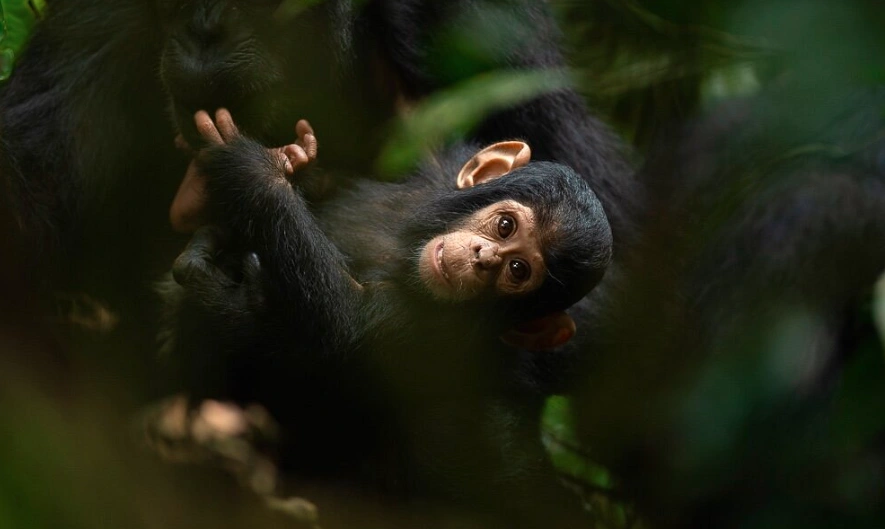
Kibale is more than a park — it’s a living cathedral of green, filled with ancient fig trees, whispering mahogany groves, and the thumping echo of unseen feet high in the canopy.
While most visitors come for chimpanzee trekking, what they discover is something deeper: a forest older than memory, a sanctuary for species found nowhere else, and a pulse of life that feels untouched by time.
Imagine:
Staring into the amber eyes of a wild chimpanzee just meters away
Wading through mist in the pre-dawn stillness of a crater lake hike
Listening to the eerie whoop of colobus monkeys at dusk
This is not a zoo. This is Kibale.
1. Chimpanzee Trekking in Kibale
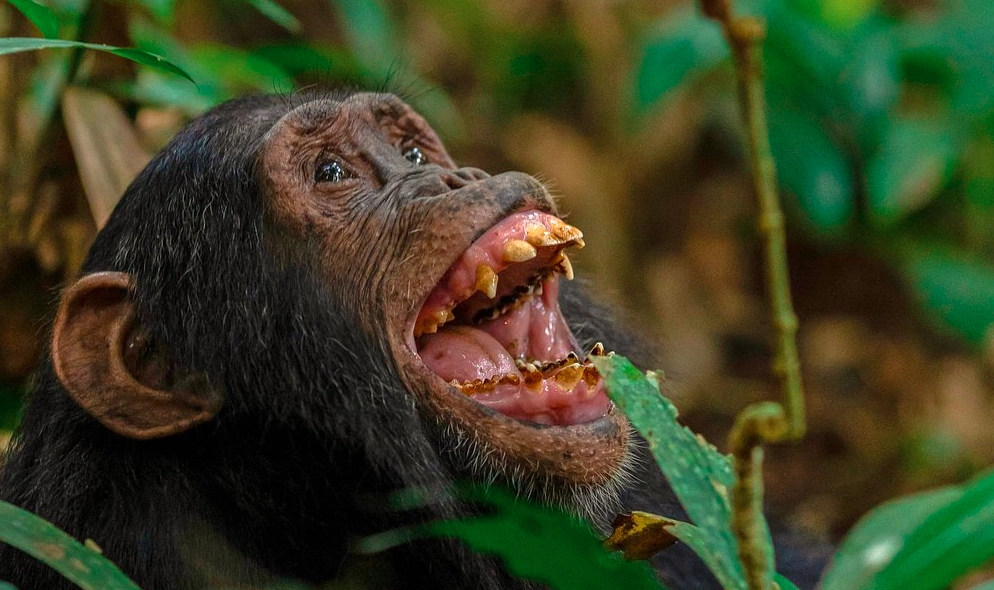
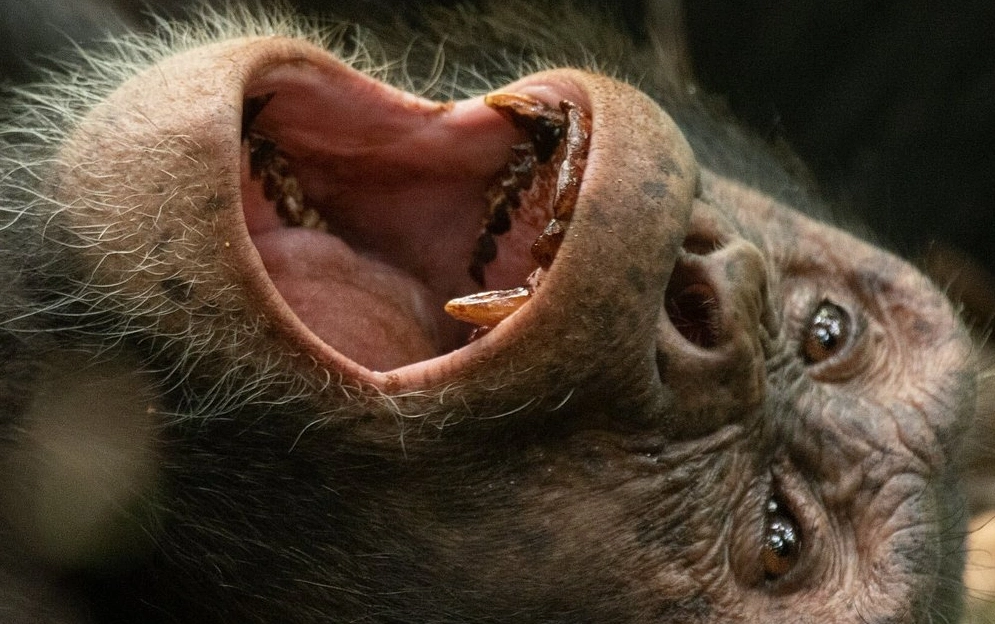
Chimpanzee trekking is the heartbeat of Kibale — and easily one of the most thrilling wildlife experiences in Africa. Each morning and afternoon, small groups set out with expert guides and trackers to find and follow troops of wild chimpanzees deep into the rainforest.
You’ll walk through a tangled wonderland of vines, ancient trees, and dew-drenched foliage. Suddenly, the forest goes quiet. A distant hoot echoes. Your guide lifts a hand.
And then — there they are.
Chimps swinging overhead, feeding on figs, or grooming in tight family circles. Watching them is unnervingly human: their eyes expressive, their gestures familiar, their behavior sophisticated.
You’ll typically spend 1 full hour in their presence — a moment that, for many, becomes the highlight of their life.
Trekking Logistics
Duration: ~2 to 5 hours round-trip
Start Times: 8:00 AM and 2:00 PM
Group Size: Max 6 guests per chimp family
Minimum Age: 12 years
Fitness Level: Moderate (can be muddy, hilly, and humid)
Chimp Trekking Permit Fees (2025)
| Nationality | Regular Trek | Habituation Experience |
|---|---|---|
| Foreign Non-Resident | $250 | $300 (Half-day) |
| Foreign Resident | $200 | $250 |
| East African Citizen | UGX 180,000 | UGX 250,000 |
🎫 Book Early – permits often sell out weeks in advance during peak seasons.
2. Habituation Experience (Deeper Immersion)
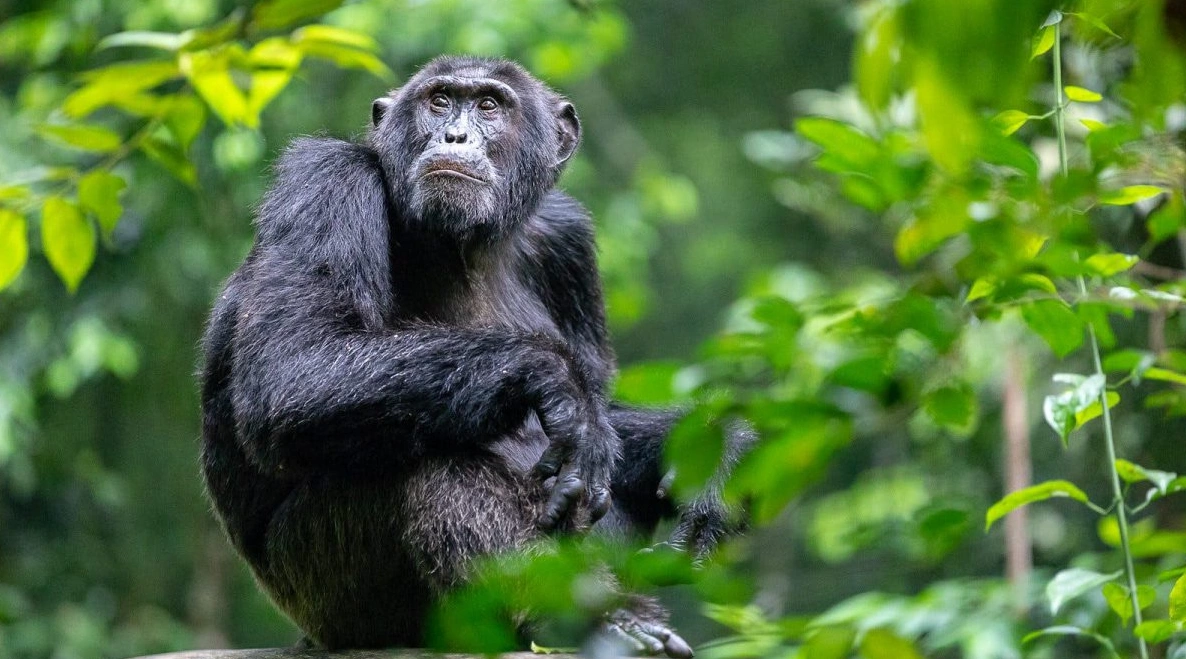
Want more than just an hour? The Chimpanzee Habituation Experience lets you spend up to 4 hours with a semi-wild troop undergoing human familiarization.
You’ll follow them from nest to nest, observing intimate moments as they play, hunt, and interact.
It’s intense, raw, and far less predictable — perfect for wildlife photographers, primatologists, or simply the curious soul who wants deeper connection.
What to Pack for a Trek
Long-sleeved shirt & trousers (for nettles & ants)
Waterproof hiking boots
Lightweight rain jacket
Insect repellent
Camera with zoom lens
1–2L of drinking water
Small backpack
Optional: walking stick (provided on request)
Activities Beyond Chimpanzee Trekking in Kibale
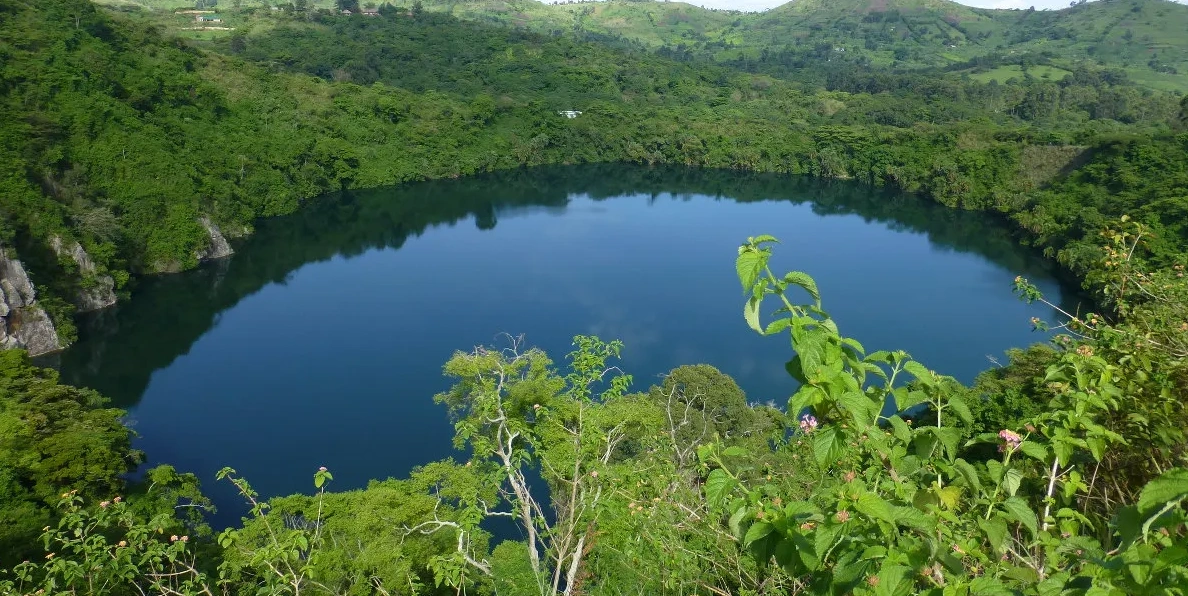
Bigodi Wetland Sanctuary
Just a short distance from Kibale’s Kanyanchu Visitor Centre lies the Bigodi Wetland Sanctuary—a remarkable example of how ecotourism can benefit both people and the environment.
Managed by the Kibale Association for Rural and Environmental Development (KAFRED), the sanctuary is more than just a birding site; it’s a community-run success story where 100% of tour proceeds support local schools, healthcare, and women-led businesses.
Morning and afternoon guided walks (approximately 3 hours each) take you through swampy trails and boardwalks surrounded by papyrus, ferns, and fig trees. Birders stand a good chance of spotting the great blue turaco—Bigodi’s most famous resident—alongside hornbills, kingfishers, and rare West African forest-edge species.
Primates are also commonly seen here, including red colobus monkeys, black-and-white colobus, and the L’Hoest’s monkey.
For an ideal experience, opt for the morning walk when birds are most active and temperatures are cooler. Combine this excursion with an overnight stay at nearby eco-lodges like Kibale Forest Camp for a well-paced and rewarding itinerary.
Explore the Toro Crater Lakes
The Toro region, a short drive from the park, is home to over 30 permanent crater lakes formed by ancient volcanic activity. These sapphire-blue lakes—surrounded by rich farmland and remnant forest—offer a serene contrast to the dense canopy of Kibale.
The crater lakes are more than scenic backdrops. Some are bilharzia-free and safe for swimming, while others serve as settings for canoeing, mountain biking, and crater rim hikes.
Lodges like Ndali and Kyaninga offer not just access to these lakes, but breathtaking views, often with the snow-capped Rwenzori Mountains in the distance.
If you’re looking for a full-day exploration, a guided crater lakes tour can include visits to Mahoma Falls, tea plantations, and panoramic hilltop lookouts.
This is the ideal counterbalance to the more intense experience of chimp tracking.
Where to Stay
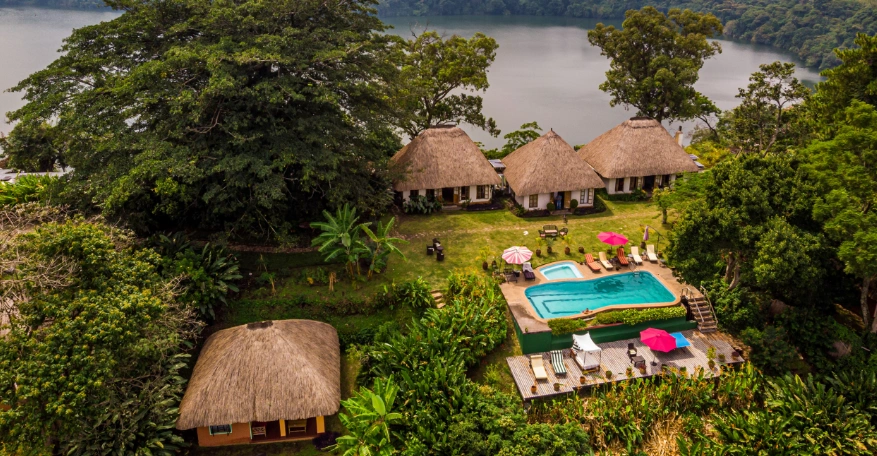
Kibale offers a variety of lodges for different traveler styles—from luxury eco-resorts to rustic forest retreats. These are not cookie-cutter hotels but destinations in themselves, blending into the surrounding wilderness and often run by passionate hosts deeply involved in conservation and community engagement.
| Lodge | Highlights | Ideal For |
|---|---|---|
| Ndali Lodge | English country-house charm set on a crater rim tea estate. Family-run with stunning views of the Rwenzori Mountains. | Romantic escapes, crater lake access, quiet reflection. |
| Kyaninga Lodge | Alpine-style log cabins perched on a volcanic rim. Self-built by local craftsmen with attention to detail. | Adventure seekers, photographers, luxury lovers. |
| Primate Lodge | Located inside the park just minutes from chimp trekking trailheads. Immersive jungle experience with forest sounds 24/7. | Wildlife lovers, early trekkers, eco-travelers. |
Whether you’re seeking comfort after a long hike or an immersive forest stay, Kibale’s lodges offer experiences as memorable as the activities themselves.
How to Get to Kibale National Park
Travel to Kibale is straightforward by both road and air. From Entebbe, it’s a scenic 5–6 hour drive via Fort Portal.
The road is mostly tarmacked and offers glimpses into Uganda’s lush highland countryside.
Those arriving from other national parks—like Queen Elizabeth or Murchison Falls—can expect 3–7 hours depending on the route and conditions.
Alternatively, daily domestic flights from Entebbe to Kasese Airport shorten travel time dramatically. From Kasese, it’s about a two-hour drive to Kibale.
For safari-goers on a larger circuit, air transfers are available between Kasese, Kihihi, and the northern parks like Murchison Falls, providing logistical flexibility.
Wildlife in Kibale National Park
Chimpanzees and Primates
Kibale is the best place in Uganda—and arguably all of Africa—to see wild chimpanzees.
Around 1,450 chimpanzees live in the forest.
Kibale hosts 13 species of primates, the highest primate density in Africa.
Notable primates include:
Red colobus monkey (threatened)
L’Hoest’s monkey (rare and elusive)
Black-and-white colobus
Grey-cheeked mangabey
Olive baboon and blue monkey
Chimp tracking is the star attraction, but visitors often spot several monkey species during forest walks.
Other Mammals
While chimps take center stage, Kibale is home to over 70 species of mammals.
Forest elephants roam the deeper parts of the forest—smaller and hairier than their savannah cousins.
Buffalo, bush pigs, golden cats, and duikers are also present.
Leopards are very rarely seen but do inhabit the forest.
Most non-primate mammals are shy and hard to spot, but their tracks and signs are everywhere.
Flora: Where Time Grows Tall
Kibale’s biological richness is mirrored by its botanical variety. Over 350 tree species flourish here, some reaching up to 55 meters in height and more than 200 years in age.
Originally protected as a forest reserve in the 1930s and later upgraded to national park status in 1993, Kibale has long been recognized for its ecological importance. Forest covers about 75% of the park, with savannah grasslands and woodland ecosystems found mostly on ridgetops and slopes.
The landscape is shaped by altitude and water. Swamp forests form in valley bottoms, while drier tropical hardwoods grow on higher ground.
Some sections, like Sebitoli in the park’s north, feature a mix of open fields, tea plantations, and forest fragments, creating an ideal environment for edge species like butterflies and birds of prey. In the stillness of the forest interior, ancient fig trees dominate the skyline while lianas dangle like chandeliers in a dimly lit cathedral.
And then there’s the soundscape: the high-pitched calls of colobus monkeys echoing through the canopy, the slow creak of ancient trees in the breeze, the distant whoop of a chimpanzee reverberating through your chest like a drumbeat from some long-forgotten part of your DNA.
It is a forest that feels alive in a way few places do—intelligent, reactive, sentient.
Geography and Geology
Kibale’s location plays a major role in its biodiversity and unique landscapes.
Lies 50 km north of the equator in western Uganda’s Kabarole District.
Elevation ranges between 1,100 and 1,590 meters.
Sits on the eastern slopes of the Rwenzori Mountains.
Part of the Albertine Rift, a region known for endemism.
Soils are volcanic and nutrient-rich, formed from ancient ash and glacial flows.
The forest sits atop a Precambrian gneiss basement, contributing to its fertility and ability to support tall, ancient trees.
The Kibale Wildlife Corridor connects it to Queen Elizabeth National Park, allowing free movement of animals between ecosystems.
Final Note: Kibale Forest isn’t just a park. It’s a biological pulse that beats through the western highlands of Uganda. It’s a sanctuary, a scientific resource, a cultural landmark—and for those lucky enough to walk its trails, an unforgettable encounter with a primeval world still untouched by time.


